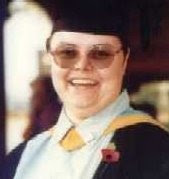Poetry Friday 23: Remembrance 2

Continuing my theme for November of poems for Remembrance, I'd like to offer the following poems.
Break of Day in the Trenches
The darkness crumbles away.
It is the same old druid Time as ever,
Only a live thing leaps my hand,
A queer sardonic rat,
As I pull the parapet's poppy
To stick behind my ear.
Droll rat, they would shoot you if they knew
Your cosmopolitan sympathies.
Now you have touched this English hand
You will do the same to a German
Soon, no doubt, if it be your pleasure
To cross the sleeping green between.
It seems you inwardly grin as you pass
Strong eyes, fine limbs, haughty athletes,
Less chanced than you for life,
Bonds to the whims of murder,
Sprawled in the bowels of the earth,
The torn fields of France.
What do you see in our eyes
At the shrieking iron and flame
Hurled through still heavens ?
What quaver - what heart aghast?
Poppies whose roots are in man's veins
Drop, and are ever dropping;
But mine in my ear is safe -
Just a little white with the dust.
- Isaac Rosenberg
Isaac Rosenberg was the least privileged of the British First World War poets. He was born in 1890, into a working-class Jewish family which had emigrated from Russia and eventually moved to the East End of London. Although Rosenberg's working-class origins and financial circumstances prevented him from attending either Oxford or Cambridge University, he was a talented artist and enrolled in evening classes at the Art School of Birkbeck College, part of London University. He hoped to make a living as a portrait artist and had moved to South Africa to pursue his career when the First World War broke out. He returned to England in 1915, enlisted in 1916, and was killed at the front on April 3, 1918.
The Rear-Guard (Hindeburg Line, April 1917)
(from Counter-Attack and Other Poems)
Groping along the tunnel, step by step,
He winked his prying torch with patching glare
From side to side, and sniffed the unwholesome air.
Tins, boxes, bottles, shapes too vague to know;
A mirror smashed, the mattress from a bed;
And he, exploring fifty feet below
The rosy gloom of battle overhead.
Tripping, he grabbed the wall; saw some one lie
Humped at his feet, half-hidden by a rug,
And stooped to give the sleeper's arm a tug.
'I'm looking for headquarters.' No reply.
'God blast your neck!' (For days he'd had no sleep,)
'Get up and guide me through this stinking place.'
Savage, he kicked a soft, unanswering heap,
And flashed his beam across the livid face
Terribly glaring up, whose eyes yet wore
Agony dying hard ten days before;
And fists of fingers clutched a blackening wound.
Alone he staggered on until he found
Dawn's ghost that filtered down a shafted stair
To the dazed, muttering creatures underground
Who hear the boom of shells in muffled sound.
At last, with sweat of horror in his hair,
He climbed through darkness to the twilight air,
Unloading hell behind him step by step.
- Siegfried Sassoon
Siegfried Sassoon was born at the family home of Weirleigh in Matfield, Kent, in 1886. He was the second son of Alfred and Theresa (née Thornycroft), who subsequently separated when Sassoon was just five years old. Alfred had been disowned by his mother on his marriage to Theresa because she was not a Jew, and Alfred was the first of the Sassoon clan to marry outside the family faith. Alfred died of TB when Sassoon was nine. Siegfried was educated at Marlborough College (a private boarding school in Wiltshire), then at Clare College, Cambridge. He studied both Law and History at Cambridge, before leaving without taking a degree. After he left Cambridge, Sassoon lived the life of a sportsman, hunting, riding point-to-point races and playing cricket until the outbreak of the First World War. He enlisted on 2 August 1914, two days before the British declaration of war, and initially joined up as a trooper in the Sussex Yeomanry. However, after a riding accident whilst doing some field-work (he had put his horse at a fence blind with summer vegetation, and a hidden strand of wire brought the horse down on top of him, leaving Sassoon with a badly broken right arm), Sassoon was commissioned in the Royal Welch Fusiliers in May 1915. Between November 1915 and April 1917 he served as a second lieutenant in both the First and Second Battalions, Royal Welch Fusiliers. (There's a longer version of this biography on my Counter-Attack website.)


2 comments:
You've been rounded up. Thanks!
Thanks Nancy !
Post a Comment